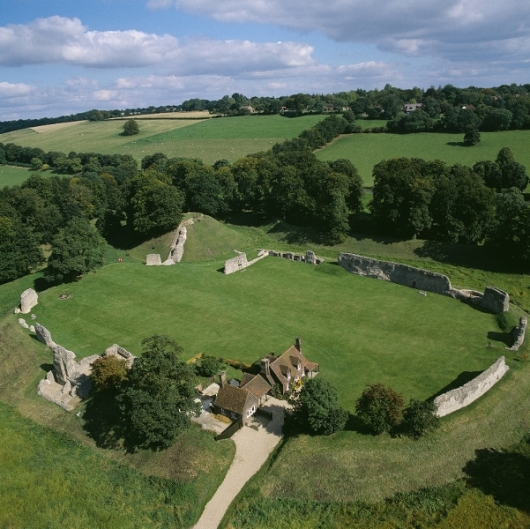The Gamma was an early British airship (first introduced in February 1910) designed to be tested for military use with the fledgling Royal Air Service. It was approximately 5th in a series of early test airships in the early 1900's and served admirably to provide new designs and operational capability!
Gamma
(Shown here, the Gamma, in its original design.)
Photo credits: Rosebuds, http://www.earlyaeroplanes.com/archive/airships01/1910.Gamma.I.jpg
Construction
In the early 1900's, the United Kingdom experimented with dirigibles for military purposes. In 1910, the Astra Company in Paris, built parts, if not all, the components for some airships for the UK. There are definite design characteristics in the Gamma which show a French origin! (See "British Airships: Past, Present, and Future", by George Whale, 1919, pg 70-71.)
In February 1910, the "Gamma" was completed. Quoting from Whale: "This was a much bigger ship [than the British Beta] with an envelope of 75,000 cubic feet capacity, which, though designed in England, had been built by the Astra Company in Paris. The car, as in Beta, was carried in a long framework suspended from the envelope. This portion of the ship was manufactured in England, together with the machinery. This consisted of an 80 horse-power Green engine driving swiveling propellers, the gears and shafts of which were made by Rolls Royce. The engine drove the propeller shafts direct, one from each end of the crankshaft." (Whale, pg 74-75).
Operations
Originally the envelope was fitted with inflated streamlined stabilizers on either side (the bulbous lobes at the aft), but at a later date these were replaced by fixed stabilizing planes. At the same time the Green engine was removed and two Iris engines of 45 horse-power were installed, each driving a single propeller. There were two pairs of elevators, each situated in the framework, one forward, the other aft. There was also a rudder, mounted at the aft-end of the framework of the control car. (See the first photo, below.)
From British Airships 1905-30, by Ian Castle: "By June 1910, Gamma had a new car fitted with a shorter framework, 21 ft long and 16 ft wide; the forward and aft elevators were replaced with a box-like tail plane, and the inflated fins with fixed types..., it became known as the Gamma II, able to carry six people - crew and passengers (although nine were carried at the 1912 army maneuvers) - as well as wireless equipment and enough fuel for an eight-hour journey." Only after at least two changes of the Gamma's envelope and many other changes did she become the "Gamma II" being first called so in the media in September, 1912, after being fitted with its larger, 101,000 cu ft envelope.
Suffice it to say, the Gamma was a "trail blazer" for British airships from 1910 to 1914. She underwent many modifications and improvements in her 4 years of operation, and had proven herself a capable vehicle, and provided many design improvements to later airships (the Delta and Eta for example) by the time she, and the other active airships of the Royal Air Service were suddenly turned over to the Royal Navy on 1 Jan, 1914.
Demise
The Gamma which first flew in February 1910, and was subsequently redesigned and reflown as the Gamma II in the latter part of 1912 was ultimately handed over to the British Navy in January 1914 after an abrupt cessation of airship activity by the British Army. The Gamma II became the "No. 18" Naval airship,but at the start of the War in August, 1914, she lay deflated in a shed at Farnborough. (Whale, pg 93). I was unable to find any precise details the ultimate fate of the Gamma II, but apparently she did not crash. It is known, however, that airships were making rapid progress in 1914-1915, and what with a war now going on, it would not be surprising if the Gamma was ultimately simply hangared, and disassembled having succumbed to obsolescence.
Ignominious End
Whale, 1919, page 93, reports that the Gamma, at the onset of WW I (August 1914), lay deflated at Farnborough (now a Naval air station). This matches the last evidence I could find of the Gamma in operations. The 24 July 1914 issue of "Flight" magazine, page 792, has a photo of the Gamma in-flight "on its way to Portsmouth". (That year, Portsmouth was becoming a base for the Military Wing of the Royal Flying Corps.) Whale additionally reports that in January 1915, the Gamma was inflated for mooring experiments. After that, there is no record of the Gamma. Presumably, with her components aging, and her mission obsolete, she was set aside and ultimately dismantled.
(Shown here, the Gamma, rebuilt after flight testing of the original design, see text.)
Photo credits: "Postcards then and now", http://postcardsthenandnow.blogspot.com
Note: The photo of the postcard has been intentionally flipped left-to-right. Notice the 1912 construction lengthening the "B" Shed in the background. Given the orientation of the Balloon Factory building (long white building in front of the "B" Shed) the image must be flipped to be correct. The Balloon Factory Building was south of the 'B' Shed, so in the image above, the construction should be on the right as shown here.)
(Note: Compare these two photos above. In the 1st, which dates from February, 1910, there are clear distinctions. She was officially called "Dirigible No. IIA", though spectators called her the "Yellow Peril" due to the bright color of its envelope (see "Flight" magazine, 19 Feb, 1910). This "original" Gamma had inflatable tail components and a "fore and aft" horizontal elevator and a rudder on the mainframe of the "car". Note the absence of fixed tail planes on the envelope in the original version. In the second photo which dates from ~Apr-May 1912, the inflatable tail pods are replaced by fixed tail segments, the fore & aft elevators are gone, the framework is largely covered with fabric, there is a "skid" added beneath the engine section of the framework, and the "rudder" at the aft of the framework has been replaced with a "box" rudder assembly.) By the time of the latter photo, the envelope itself was replaced between, as the first envelope was reported as "leaky" (see "Flight" magazine, 29 October, 1910).
Return to topSites of Interest
Aldershot UK:
This following shot was of particular interest, because it identifies the street name. I thought I'd take a stab at finding it, and I was rewarded because not only is the town of Aldershot still around, but "Queen's Avenue" is still the same street! But I was doubly rewarded - then gobsmacked! See what follows:
Photo credits: Imperial War Museums. http://imw.org.uk
(Note: I originally believed this photo to be from late 1912 or early 1913. The "box rudder" at the back of the control car is notably absent, and the envelope appears to be the larger 101,000 cu ft version employed late in the Gamma's life, which makes the photo of the "Gamma II". See also the photo below of the Gamma II from 1913 during its visit to the Berkhamsted Castle.)
Then, in January 2020, I was notified by "Martin" via a comment, that the photo was actually an early composite. He calls it "a serious 'cut-n-paste' paste job from the time." He went on: "Gamma, the car and the spectators were all added by the postcard publishers to an earlier photo of the avenue." Ouch! I'm usually pretty good about spotting early composite photos, and I immediately looked into this!
Well, Martin was correct! But there was even more to the story of this photo!
I began digging, and sure enough, I found the same photo shot down Queen's Avenue, yet I had never seen it before, buy there was a biplane in the photo, and soldiers! I'll refer to this as the "biplane photo." Here it is:
Photo credits: Public domain
The problem is, the more I examined this photo, the more I found wrong with it! I found the same photo in much higher quality at the Mary Evans Picture Library, but they charge for these public domain photos (shame on them), so I can't reproduce the higher-quality photo here. What I found was that not only is the automobile in the biplane photo the exact same auto image seen in the Gamma photo, and the pedestrians in the Gamma photo not in the biplane photo, but the soldiers in the biplane photo are also clearly added! The only thing common between the two photos is the street scene!
This begs a comparison!
I carefully aligned the two photos on the end of the street, as best I could, and here is the result:
(Click & hold the blue slider to compare two images:)
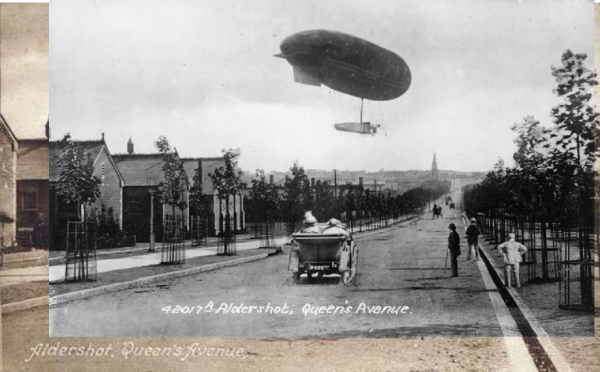
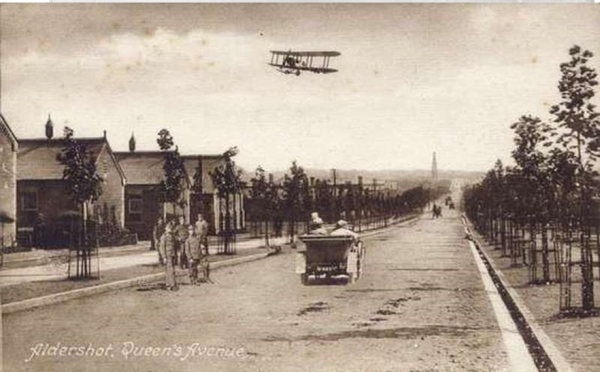
There are many observations to make of the two photos:
- The auto is clearly cut & pasted onto both photos. (In a higher resolution image, the composite is obvious.)
- The auto is is not pasted into the same position on both photos. The auto is seen farther to the left in the airship version.
- The soldiers in the airplane version are clearly cut & pasted.
- The tops of the trees are slightly different suggesting the two photos differ in time.
- Differences in the horse manure on the street suggest the photos differ in time.
- Differences in the clouds suggest the photos differ in time.
- In the airplane version, there is a faint image of a person walking on the sidewalk who moved during the exposure. This person is seen to the left of the auto, on the sidewalk but between the trees. This person is not in the airship photo.
- The 3 men on the road at the right of the airship version don't appear to be the right size compared to the auto. They may have been in the real photo, and the addition of the auto ruined the perspective.
- The photo with the Gamma may be real as there is no obvious evidence that the Gamma was composited into the photo as clearly the auto was.
Anyway, here is a section of Aldershot today, with South oriented to the top, and Queen's Avenue highlighted in the red oval:
Photo credits: Google Earth
The image above is centered on (Lat Lon) 51.266270 -000.754722. Here is the view in Google Maps, except oriented north:
<
Photo credits: Google Earth
As I examined Queen's Avenue more closely, looking perhaps for the Steeple seen in the distance in the photo of the Gamma above, I stumbled upon the "Aldershot Military Museum", seen here in this shot from Google Earth:
Photo credits: Google Earth
The above image is centered on (Lat Lon) 51.269905 -000.751029.
Curiously, there is a photo in Google Earth of the Aldershot Military Museum, and upon selecting it, I was in for a shock! Here is the photo:
Photo credits: Google Earth, fencer_js@yahoo.com
Do you see it? Look at the crest of the roof of the Aldershot Military Museum, and the Vents (?) on the roof! Here is a comparison:
Photo credits: Google Earth, fencer_js@yahoo.com
The building in the foreground of the shot of the Gamma over Queen's Avenue in Aldershot is one-in-the-same today the Aldershot Military Museum! This makes the shot of the Gamma taken over 100 years ago from fairly precisely here: (Lat Lon) 51.270148 -000.750853. (Click here to View in Google Maps).
Here is another shot I found of the Aldershot Military Museum for comparison:
Photo credits: Cowpatman on Photobucket
http://i735.photobucket.com/albums/ww354/cowpatman/AldershotMilitaryMuseum2.jpg
There is no question the Aldershot Military Museum is the same building complex as seen in the early 1900's shot of the Gamma! I found this to be an exciting identification even though the shot is now questioned as having been actually shot while the Gamma was overhead!
Return to topFarnborough UK:
The Gamma was designed and built at the Farnborough "Balloon Factory" which had become the home of British Airship activity when the factory was moved there from Aldershot in 1905-06.
Here is a shot of the Farnborough facility as it was in initial construction in the 1908 time frame. Note the largest (tallest) hangar in the foreground. It becomes the 'B' airship shed, the first airship hangar constructed at Farnborough. It was about 160 ft long, 82 ft wide, and 72 ft high and was then doubled in length to about 320 ft long in 1912 as airship work at the facility increases. (In an earlier photo, above, one can see the construction to double the length of the B Shed) :
Photo credits: FAST Briefing No. 7, pg 3, airsciences.org.uk.
Construction activity was rapid at Farnborough, and a new hangar was contracted to the Cleveland Bridge and Engineering Company in September, 1909, to be completed by February 1910. (See "Flight" Magazine, 11 Sep, 1909, pg 562.):
Photo credits: Flight magazine, 15 Jan 1910, pg 38
And here is a terrific photo of the Gamma emerging from that very shed:
Photo credits: Imperial War Museum, http://www.iwm.org.uk/collections/item/object/205192501, Ⓒ IWM (RAE-O 216)
(The other hangar seen in the photo, covered in fabric is the 260 foot long "portable" hangar, which is now restored and relocated at the Farnborough Business Park about 130 yards NE of its original location. It is evident from my research that many have confused the modern display of the old portable hangar with the later permanent hangar shown above in the photograph from which the Gamma is emerging. Some think the "upper" part of the original, permanent shed is that which is displayed today, yet photographic evidence proves this is not the case.)
Of course, seeing the photo of the Gamma emerging from the giant new hangar just begs for the location to be identified! I am pleased to announce the location has been recovered! This new hangar, or as it was known then "shed", became the 'A' Shed (also called the Lebaudy Shed), and it was located exactly on a present day part of the Farnborough airport. Not only that, but I identified where the other primary airship sheds were as well! I located the original 'B' shed, the 'C', and the 'Portable'! First, the location of the photo of the Gamma emerging from the Airship shed:
Photo credits: Google Earth
The map-pin is at (Lat Lon) 51.283170 -000.760756.
Here is the site in Google Maps:
Photo credits: Google Earth
Now, it may look like I just placed the map-pin at the edge of the present building located on the NE side of modern-day Farnborough airport, but I did not! I actually examined dozens of old photographs and determined the location of the former airship sheds. I found that the first shed was the "B" shed, then came the 'A' Shed, the 'Portable' and finally the 'C' Shed. I made measurements on the photos to determine the locations. As best I could conclude their locations were as follows:
Photo credits: Google Earth
As mentioned, the 'B' Shed was built first, in approximately 1905-06, and later doubled in length in 1912. I also may be a few feet off in any direction for each of the sheds, but in general, they are correctly placed. Someone today could stand at the traffic circle at Fowler Ave and Pinehurst Rd and, looking south and southeast know they are viewing the exact area where, over 100 years ago, major airship activity took place!
Return to topBerkhamsted Castle:
On 29 May, 1913, the Gamma, now designated the "Gamma II" due to extensive mods the previous 3 years, and incorporating a new, 101,000 cubic foot envelope, landed at the Berkhamsted Castle. Several high-quality photos exist of this visit, and it was easy to identify the location. Here are two of the many photos made while the Gamma II paid its short visit:
Photo credit: Berkhamsted Castle website, http://www.hertfordshire-genealogy.co.uk/data/places/places-b/berkhamsted/berkhamsted-castle.htm#dacorum-memory-berkhamsted-castle-airship-gamma.
And this wonderful shot:
Photo credit: IWM (RAE-O 752), http://www.iwm.org.uk/collections/item/object/205192786.
So here is the site, the Berkhamsted Castle from June, 1986:
Photo credit: English Heritage, http://www.english-heritage.org.uk/daysout/properties/berkhamsted-castle/.
And the location, where the Gamma II landed, (Lat Lon) 51.763501 -000.559312:
Photo credit: Google Maps
Return to topLindfield Common, Lindfield, West Sussex, UK:
Reader Mervyn Huggett was kind enough to provide this photo of the Gamma in West Sussex, UK in 1912. He writes, from an unknown source: "The airship set down on Lindfield Common on April 20, 1912 from Farnborough airfield. On board were six members of the Royal Flying Corps under the command of Captain P. Broke-Smith, adjutant and chief instructor with the Corps. The trip was a family affair in the end – Captain Broke-Smith took the crew to visit his father-in-law Admiral Guy Twiss at Lindfield House for breakfast."
It's a very nice "find" since the Lindfield Common still exists to this day, though it is an assumption on my part that the park is still in the same geographic location it was in in 1912!
Photo credit: Public domain
And the approximate location where the Gamma landed, (Lat Lon) 51.009554° -000.081153°:
Photo credit: Google Maps

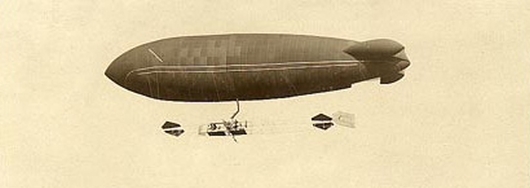
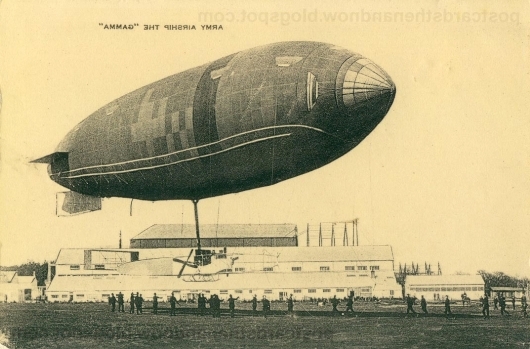
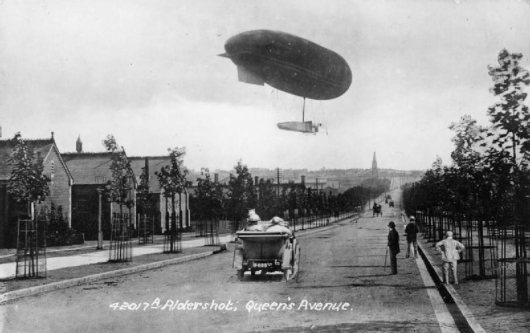

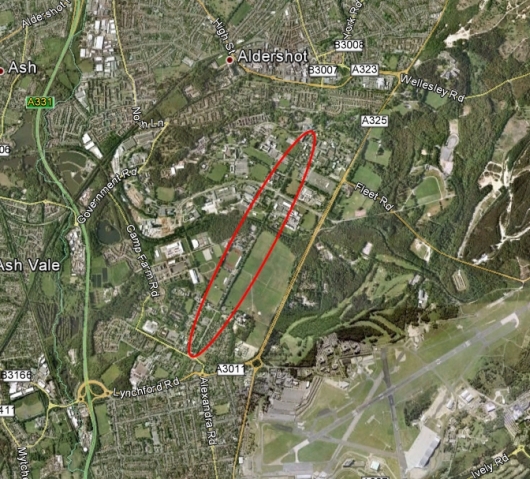
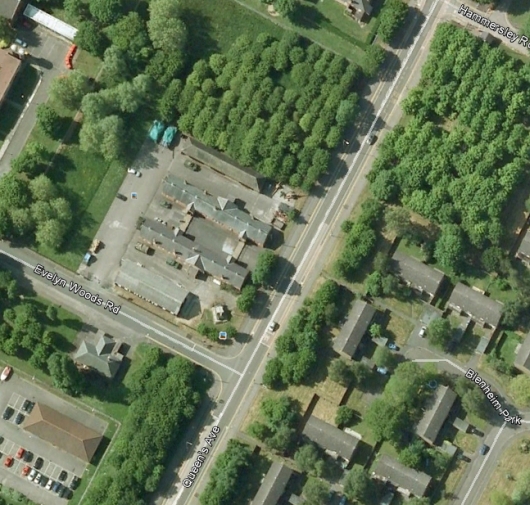
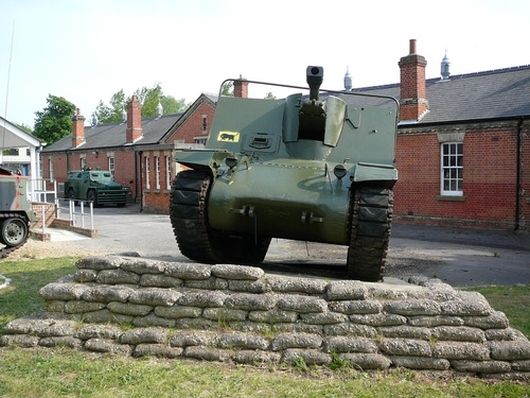
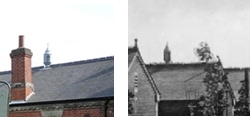
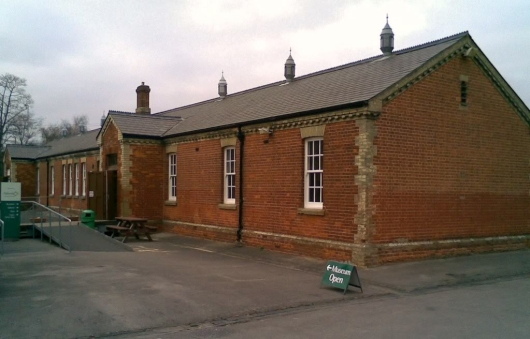
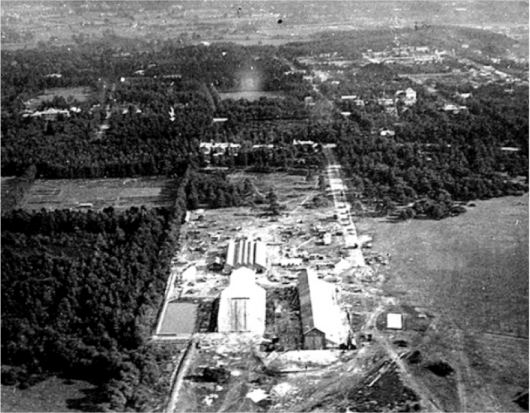
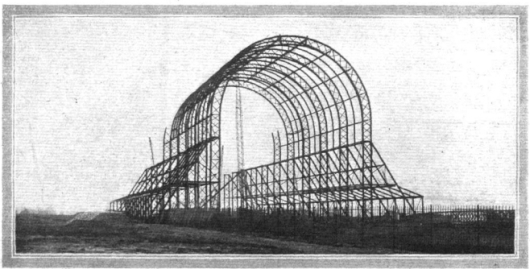
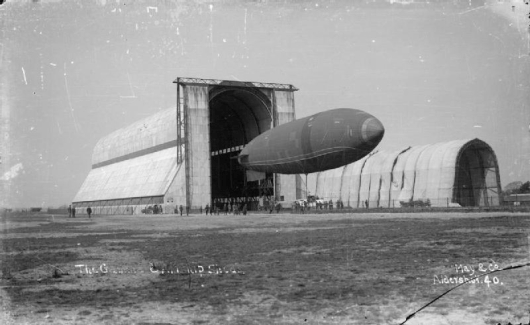
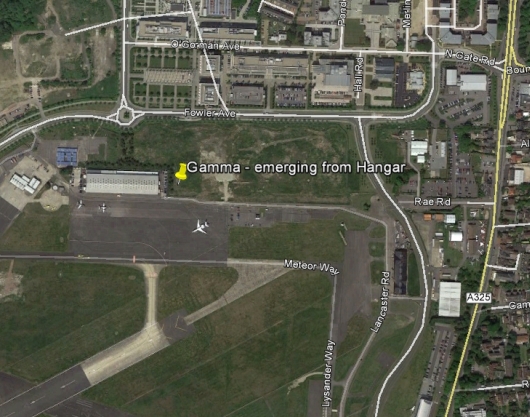

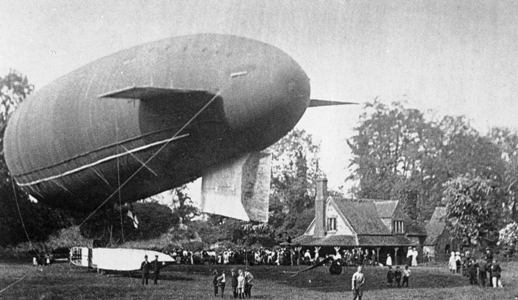
-sm.jpg)
